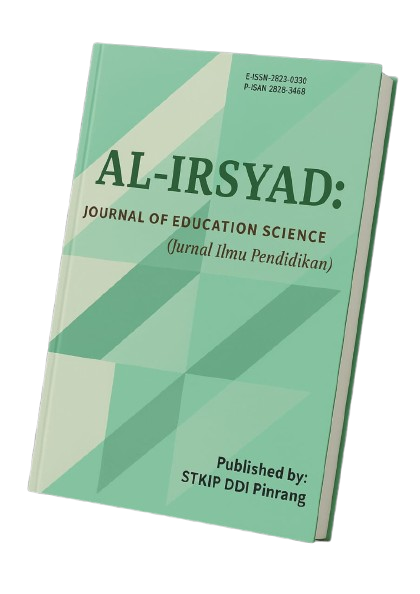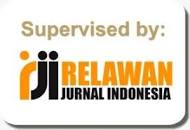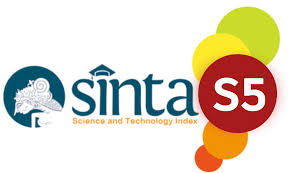THE ROLE OF DIGLOSSIA IN EDUCATION: CHALLENGES AND OPPORTUNITIES
DOI:
https://doi.org/10.58917/aijes.v4i2.197Kata Kunci:
Challenges, Diglossia, Education, OpportunityAbstrak
Diglossia is a phenomenon in sociolinguistics that means the use of two language variants with different social functions, where the two language variants are divided into high language (H) and low language (L). This has a significant impact in education, where initial observations found a comprehension gap in bilingual students. This article aims to explore the role of diglossia in an educational context, focusing on the challenges and opportunities it raises in the teaching and learning process. This research uses a qualitative approach with literature study methods and interviews with educators and students in one of the Islamic boarding schools in Batang Hari who experience the phenomenon of diglossia. The collected data were analyzed descriptively to identify the role of diglossia in understanding teaching materials, as well as strategies that can be applied to minimize communication barriers in the teaching and learning process. The results of the study show that diglossia can function as a language enrichment tool, but it can also lead to gaps in understanding if not managed with the right strategy.
Referensi
Cummins, J., Baker, C., & Hornberger, N. H. (2001). An Introductory Reader to the Writings of Jim Cummins. Multilingual Matters.
Dr. Umar Sidiq, M.Ag Dr. Moh. Miftachul Choiri, M. (2019). Metode Penelitian Kualitatif di Bidang Pendidikan. In Journal of Chemical Information and Modeling (Vol. 53, Issue 9). http://repository.iainponorogo.ac.id/484/1/METODE PENELITIAN KUALITATIF DI BIDANG PENDIDIKAN.pdf
Ferguson-Diglossia.pdf.crdownload. (n.d.).
Fitrah, M., & Luthfiyah. (2018). Metodologi penelitian: penelitian kualitatif, tindakan kelas & studi kasus - Google Books. In CV Jejak (p. 51).
Gauvain, M. (2008). Vygotsky’s Sociocultural Theory. In Encyclopedia of Infant and Early Childhood Development. Academic Press. https://doi.org/10.1016/B978-012370877-9.00170-5
Janet Holmes. (2013). An Introduction of Sosiolinguistic (Vol. 15, Issue 2).
Mouwn Erland. (2020). Metodologi Penelitian Kualitatif. In Metodologi Penelitian Kualitatif. In Rake Sarasin (Issue March).
Nilamsari, N. (2014). Memahami Studi Dokumen Dalam Penelitian Kualitatif. Wacana, 8(2), 177–1828. http://fisip.untirta.ac.id/teguh/?p=16/
Puji Rianto, SIP., M. (2021). Modul Meetode Penelitian Kualitatif. In Nuevos sistemas de comunicación e información.
Rajendram, S. (2021). Translanguaging as an agentive pedagogy for multilingual learners: affordances and constraints. International Journal of Multilingualism. https://doi.org/10.1080/14790718.2021.1898619
Schiffman, H. F. (2017). Diglossia as a Sociolinguistic Situation. In The Handbook of Sociolinguistics. https://doi.org/10.1002/9781405166256.CH12
Siminto. (2013). Pengantar Linguistik. Cipta Prima Nusantara Semarang, CV, 4. http://digilib.iain-palangkaraya.ac.id/2618/1/Pengantar Linguistik.pdf
Syahwani, U. (2015). STRATEGI COOPERATIVE LEARNING MODEL JIGSAW DALAM PEMBELAJARAN IPS DI KELAS IX MTs NEGERI KETAPANG. Jurnal Pendidikan Dan Pembelajaran. http://jurnal.untan.ac.id/index.php/jpdpb/article/view/11346
Ummah, M. S. (2019). In Sustainability (Switzerland) (Vol. 11, Issue 1). http://scioteca.caf.com/bitstream/handle/123456789/1091/RED2017-Eng-8ene.pdf?sequence=12&isAllowed=y%0Ahttp://dx.doi.org/10.1016/j.regsciurbeco.2008.06.005%0Ahttps://www.researchgate.net/publication/305320484_SISTEM_PEMBETUNGAN_TERPUSAT_STRATEGI_MELESTARI
Waruwu, M. (2024). Pendekatan Penelitian Kualitatif: Konsep, Prosedur, Kelebihan dan Peran di Bidang Pendidikan. Afeksi: Jurnal Penelitian Dan Evaluasi Pendidikan, 5(2), 198–211. https://doi.org/10.59698/afeksi.v5i2.236
Unduhan
Diterbitkan
Cara Mengutip
Terbitan
Bagian
Lisensi
Hak Cipta (c) 2025 Siti Munawaro, Dewi Nurfatimah, M. Saiful Azhar, M. Joeanda Riski

Artikel ini berlisensi Creative Commons Attribution 4.0 International License.























